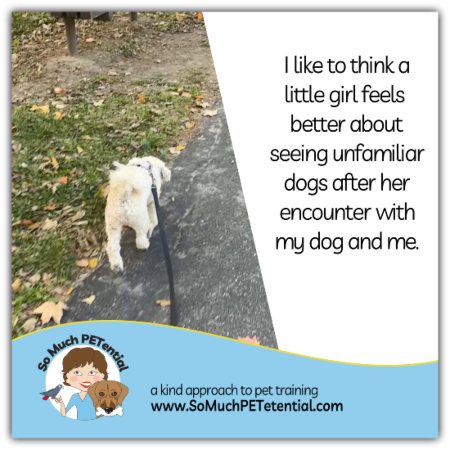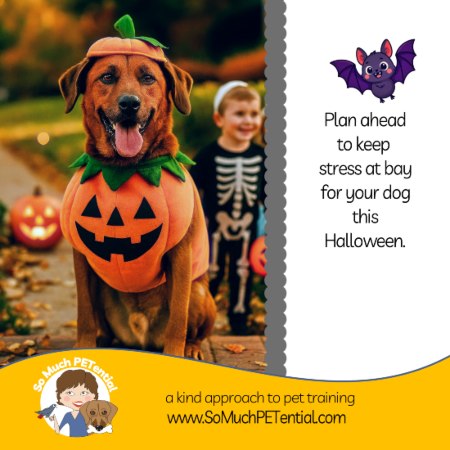Yesterday when I was walking my dog, we had an opportunity to help a child feel safe around a dog. This is our story, an important story for parents and those who have a dog.
My dog, Dawson, and I came across a mother and her maybe two-ish year old little girl. The little girl’s eyes lit up when she saw my dog. Her mom called out that her daughter loves seeing dogs.
But things changed as Dawson and I walked closer. We were about six feet apart when I saw the little girl’s body language begin to shift. A stillness came over her. As she stood watching, I saw a tear making its way down her tender face.

I asked Dawson to sit. The mother apologetically said her daughter loves dogs and really wants to meet them but then gets afraid.
I told the little girl, it’s okay to be afraid of some things. I get afraid sometimes too.
I told her Dawson loves to get kisses blown to him.
“Would you like to blow Dawson a kiss?,” I asked.
Something beautiful happened next. Her body loosened. The eye that produced a tear, softened. Her mouth that wore a frown, flipped.
She smiled.
I smiled too.
“Can you wave good-bye to Dawson?,” I asked next.
She opened and closed her fingers.
Then she told her mom she wanted to play on the swings.
Dawson and I went on our way.
There are so many reasons I love thinking about this child-dog greeting.
I like to think it made a positive impact on how she feels about seeing dogs. I like to think it also taught her mom how to support her needs for feeling safe.
I talk a lot about why parents should always supervise their young kids’ interactions with dogs so that your dog – or someone else’s dog – is comfortable, so that you minimize stress and the potential for a growl or bite. And that is very important.
It is also very important that you pay attention to how your children (and even infants and babies) feel in these encounters.
Both kids and dogs are learning from every experience. They are putting that past history into their vault called their brain, teaching them associations and predictions for future experiences.
When a child is frightened, even endangered, by a dog, it can have a long lasting impact.
Encouraging a child to approach a dog – familiar or unfamiliar – can put a lot of pressure on the child…and the dog.
Especially if you do not know the dog, teaching your young child to ignore or blow kisses and wave from a distance, not only can take that pressure off the child, it can take pressure off the dog also.
In your role as the active adult supervisor, please pay close attention to what your child’s body language is saying, and what the dog’s body language is saying. If one or both of them is showing signs of stress, greater distance may be needed…or leaving the scene all together, depending.
Afterwards, do something with your child that helps your child decompress and feel better again. If you are the dog handler, do the same. Sniffing, chewing, foraging can all be great activities to consider.
If you are walking your child and see an off leash dog in the distance, the safest thing can be simply moving away from the dog calmly BEFORE the dog approaches.
There are times when kids do meet my dog, Dawson. When that happens, I manage the encounter carefully as I know Dawson is not a dog who will sit still while a new friend tries to pet him. I often will feed Dawson low to keep him focused low. If a child is comfortable giving Dawson treats, I teach that child how to do it safely. Often I will ask kids to ask Dawson to do a behavior that he knows fluidly. They get to be junior trainers…and that can be fun!
Have a child over 6 years old? Consider registering for one of my kids’ dog classes or private training.






